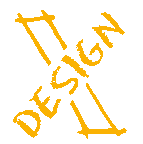Main Page
From DesignX Wiki
| (45 intermediate revisions not shown) | |||
| Line 1: | Line 1: | ||
| - | + | ''DesignX'' is Professor Larry Leifer, PhD's research group at the [http://cdr.stanford.edu Center for Design Research] at Stanford University. <br> | |
| - | + | For more information contact Professor Leifer or simply join in for weekly ''DesignX'' research group [https://www.stanford.edu/group/designx_lab/cgi-bin/mainwiki/index.php/DesignXAgenda meetings] during the school year. | |
| - | + | DesignX usually meets during Stanford's Autumn, Winter and Spring quarters. | |
| - | * [ | + | DesignX meetings are held Wednesday evenings from 5:15 to 6:30 PM (17:15-18:30) on the second floor of the Center for Design Research at 424 Panama Mall, Building 560 on the Stanford campus. |
| - | + | ||
| - | + | The GPS coordinates for the front door of CDR are: Latitude 37 degrees 25.25 minutes North, Longitude 122 degrees 10.31 minutes West.<br>Click on the red link below for the current quarter's programs, speakers and schedule. | |
| + | |||
| + | *[https://www.stanford.edu/group/designx_lab/cgi-bin/mainwiki/index.php/User:Leifer Whatever meetings with Larry] | ||
| + | |||
| + | <br> | ||
| + | |||
| + | <br><br> | ||
| + | |||
| + | [[Image:Caveman.jpg|center|600x225px]]<br> | ||
| + | |||
| + | The scope of the design research activity in the ''DesignX'' research group spans a broad range of topics related to design, including understanding existing practice, developing emerging technologies, and charting the course of design education. <br> | ||
| + | |||
| + | <br> | ||
| + | |||
| + | ===== Design as a Research Topic<br> ===== | ||
| + | |||
| + | <br>One of our core goals of research is to find out what is it that designers do when designers do design. To<br>this end, ''DesignX'' researchers have studied how design teams use their workspaces [[https://www.stanford.edu/group/designx_lab/cgi-bin/mainwiki/index.php/Ju2007references 1]], how designers access and<br>reference information in conceptual design [[https://www.stanford.edu/group/designx_lab/cgi-bin/mainwiki/index.php/Ju2007references 2]], how social interaction affects design outcomes [https://www.stanford.edu/group/designx_lab/cgi-bin/mainwiki/index.php/Ju2007references [3]], how different learning styles of team members affect group design work [https://www.stanford.edu/group/designx_lab/cgi-bin/mainwiki/index.php/Ju2007references [4]], how geographical distribution affects design team collaboration [https://www.stanford.edu/group/designx_lab/cgi-bin/mainwiki/index.php/Ju2007references [5]], how designers use question-asking in the conceptual design process [https://www.stanford.edu/group/designx_lab/cgi-bin/mainwiki/index.php/Ju2007references [6]], how expert assistance influences design outcomes [https://www.stanford.edu/group/designx_lab/cgi-bin/mainwiki/index.php/Ju2007references [7]], how design entrepreneurs use informal networks to develop innovative ideas [https://www.stanford.edu/group/designx_lab/cgi-bin/mainwiki/index.php/Ju2007references [8]], and how design affects the corporate bottom line [https://www.stanford.edu/group/designx_lab/cgi-bin/mainwiki/index.php/Ju2007references [9]]. This research has contributed to the larger understanding of what design is, has explored how different factors affect the products of the design process, and has influenced how design curriculum should be structured.<br> | ||
| + | |||
| + | <br> | ||
| + | |||
| + | ===== Design as a Research Method<br> ===== | ||
| + | |||
| + | <br>One distinguishing characteristic of ''DesignX'' research it is conducted by researchers with technical backgrounds in<br>design. This encourages empathy with the subjects of our research, but it also induces researchers to adopt design<br>as a research method. Design is applied to adapt traditional methods for research, providing new tools for data<br>collection and analysis[https://www.stanford.edu/group/designx_lab/cgi-bin/mainwiki/index.php/Ju2007references <sup>[12</sup>]]; research on design observatories[https://www.stanford.edu/group/designx_lab/cgi-bin/mainwiki/index.php/Ju2007references <sup>[11</sup>]], noun-phrase analysis[https://www.stanford.edu/group/designx_lab/cgi-bin/mainwiki/index.php/Ju2007references <sup>[13</sup>]], internet knowledge repositories[https://www.stanford.edu/group/designx_lab/cgi-bin/mainwiki/index.php/Ju2007references <sup>[14</sup>]], instrumented workspaces [https://www.stanford.edu/group/designx_lab/cgi-bin/mainwiki/index.php/Ju2007references <sup>[15</sup>]] emerged as a natural byproduct of our efforts to understand design. Design researchers are also able to build innovative designs, prototyping the design artifacts of the future to gain insights on the issues, constraints and opportunities which designers will face in years to come. By employing design as a tool and method for conducting research, we are able to better understand how design occurs, and expand the realm of how design is applied.<br> | ||
| + | |||
| + | <br> | ||
| + | |||
| + | ===== Design as a Philosophical Approach<br> ===== | ||
| + | |||
| + | <br>One of the most important aspects of ''DesignX'' is the emergence and adoption of design as an overall philosophy. This "design thinking" provides a frame from which design students, researchers and practitioners may observe and approach the world at large. Locally, we articulate the three key tenets of this framework as: <br> | ||
| + | |||
| + | ::#All design is redesign. | ||
| + | ::#Design is a social process. | ||
| + | ::#Designers preserve ambiguity.<br> | ||
| + | |||
| + | This framing and philosophy is evidenced in the major themes of ''DesignX'' research. The notion of "design as redesign," which incorporates our ideas about design being iterative, about design by analogy and situated design, has led ''DesignX'' researchers to look for external sources of design inspiration; researchers of implicit interactions provide detailed discussions of the human behaviors that interactive products emulate to communicate with users. The emphasis on collaboration, particularly in environments where people are geographically distributed and come from different disciplinary backgrounds, speaks to our belief that design is a social process. Our interest in informal and ad-hoc methods, as well as our history of research in sketching activity as part of the iterative design process, is clearly influenced by the importance of ambiguity as a critical design resource. Our researchers often exploit the ambiguity of what it means to do design research to pick and choose the research methodologies that will best suit the project or question at hand; after all, good designers use whatever tools are at their disposal, and even invent new ones if the situation demands.<br><br> | ||
| + | |||
| + | This overview of ''DesignX'' is adapted from a position paper prepared by Wendy Ju, Lawrence Neeley and Larry Leifer for a workshop on exploring design as a research activity at CHI 2007:<br><br> | ||
| + | <blockquote>Ju, W., Neeley, L., & Leifer, L. "Design, Design & Design; An overview of Stanford's Center for Design Research," Position paper for Workshop on Exploring Design as a Research Activity, CHI 2007, San Jose, CA.<br><br></blockquote> | ||
| + | ''The references cited above are listed ''[[Ju2007references|''here'']]''.'' | ||
| + | |||
| + | <br> | ||
| + | |||
| + | [[Image:DesignXlogo.gif|right|144x144px]] | ||
| + | |||
| + | <br> | ||
| + | |||
| + | <br> | ||
Latest revision as of 10:52, 13 October 2011
DesignX is Professor Larry Leifer, PhD's research group at the Center for Design Research at Stanford University.
For more information contact Professor Leifer or simply join in for weekly DesignX research group meetings during the school year.
DesignX usually meets during Stanford's Autumn, Winter and Spring quarters.
DesignX meetings are held Wednesday evenings from 5:15 to 6:30 PM (17:15-18:30) on the second floor of the Center for Design Research at 424 Panama Mall, Building 560 on the Stanford campus.
The GPS coordinates for the front door of CDR are: Latitude 37 degrees 25.25 minutes North, Longitude 122 degrees 10.31 minutes West.
Click on the red link below for the current quarter's programs, speakers and schedule.
The scope of the design research activity in the DesignX research group spans a broad range of topics related to design, including understanding existing practice, developing emerging technologies, and charting the course of design education.
Design as a Research Topic
One of our core goals of research is to find out what is it that designers do when designers do design. To
this end, DesignX researchers have studied how design teams use their workspaces [1], how designers access and
reference information in conceptual design [2], how social interaction affects design outcomes [3], how different learning styles of team members affect group design work [4], how geographical distribution affects design team collaboration [5], how designers use question-asking in the conceptual design process [6], how expert assistance influences design outcomes [7], how design entrepreneurs use informal networks to develop innovative ideas [8], and how design affects the corporate bottom line [9]. This research has contributed to the larger understanding of what design is, has explored how different factors affect the products of the design process, and has influenced how design curriculum should be structured.
Design as a Research Method
One distinguishing characteristic of DesignX research it is conducted by researchers with technical backgrounds in
design. This encourages empathy with the subjects of our research, but it also induces researchers to adopt design
as a research method. Design is applied to adapt traditional methods for research, providing new tools for data
collection and analysis[12]; research on design observatories[11], noun-phrase analysis[13], internet knowledge repositories[14], instrumented workspaces [15] emerged as a natural byproduct of our efforts to understand design. Design researchers are also able to build innovative designs, prototyping the design artifacts of the future to gain insights on the issues, constraints and opportunities which designers will face in years to come. By employing design as a tool and method for conducting research, we are able to better understand how design occurs, and expand the realm of how design is applied.
Design as a Philosophical Approach
One of the most important aspects of DesignX is the emergence and adoption of design as an overall philosophy. This "design thinking" provides a frame from which design students, researchers and practitioners may observe and approach the world at large. Locally, we articulate the three key tenets of this framework as:
- All design is redesign.
- Design is a social process.
- Designers preserve ambiguity.
This framing and philosophy is evidenced in the major themes of DesignX research. The notion of "design as redesign," which incorporates our ideas about design being iterative, about design by analogy and situated design, has led DesignX researchers to look for external sources of design inspiration; researchers of implicit interactions provide detailed discussions of the human behaviors that interactive products emulate to communicate with users. The emphasis on collaboration, particularly in environments where people are geographically distributed and come from different disciplinary backgrounds, speaks to our belief that design is a social process. Our interest in informal and ad-hoc methods, as well as our history of research in sketching activity as part of the iterative design process, is clearly influenced by the importance of ambiguity as a critical design resource. Our researchers often exploit the ambiguity of what it means to do design research to pick and choose the research methodologies that will best suit the project or question at hand; after all, good designers use whatever tools are at their disposal, and even invent new ones if the situation demands.
This overview of DesignX is adapted from a position paper prepared by Wendy Ju, Lawrence Neeley and Larry Leifer for a workshop on exploring design as a research activity at CHI 2007:
Ju, W., Neeley, L., & Leifer, L. "Design, Design & Design; An overview of Stanford's Center for Design Research," Position paper for Workshop on Exploring Design as a Research Activity, CHI 2007, San Jose, CA.
The references cited above are listed here.


